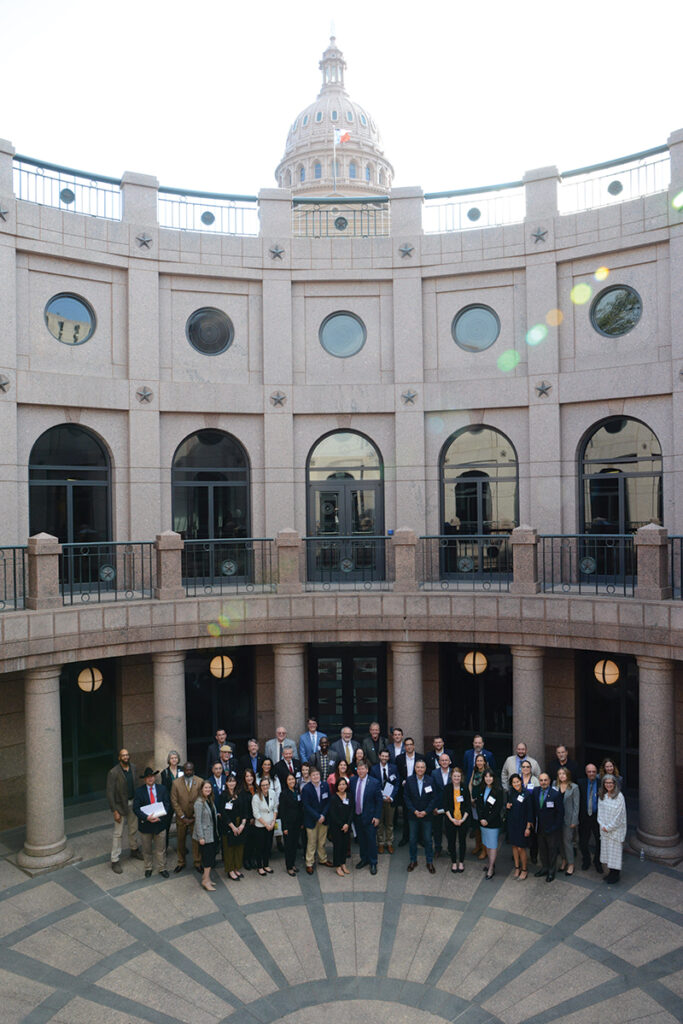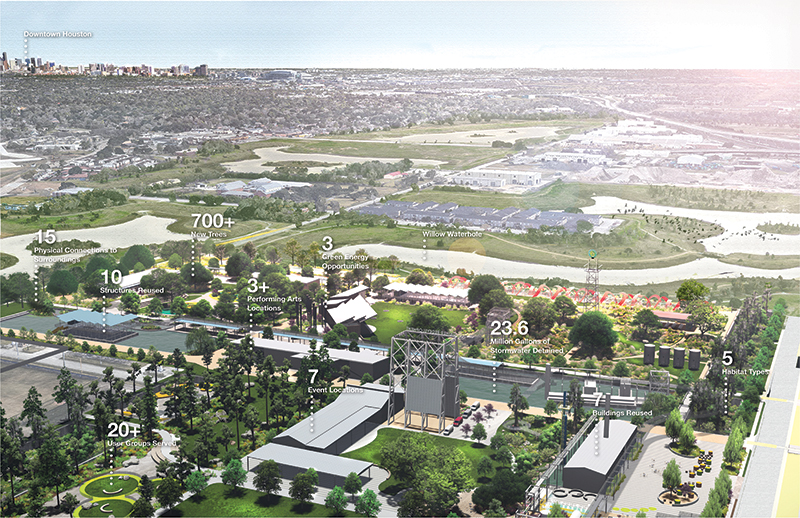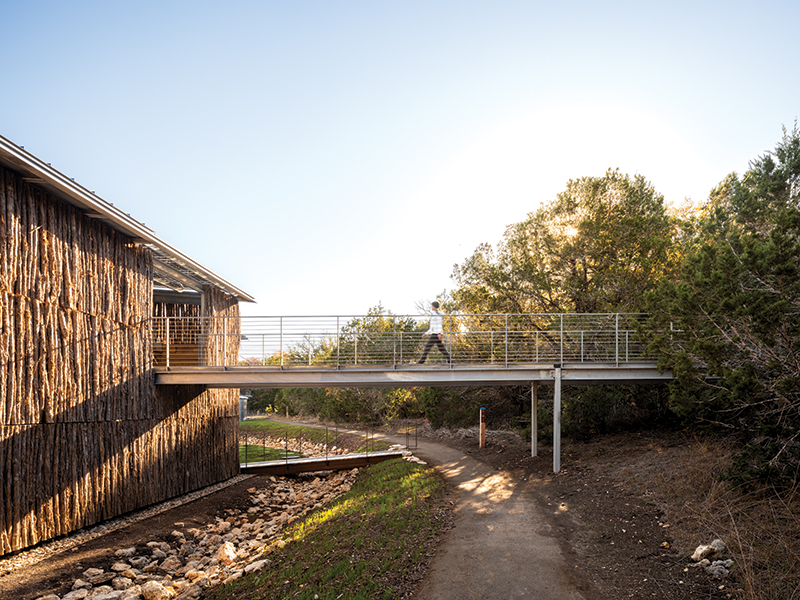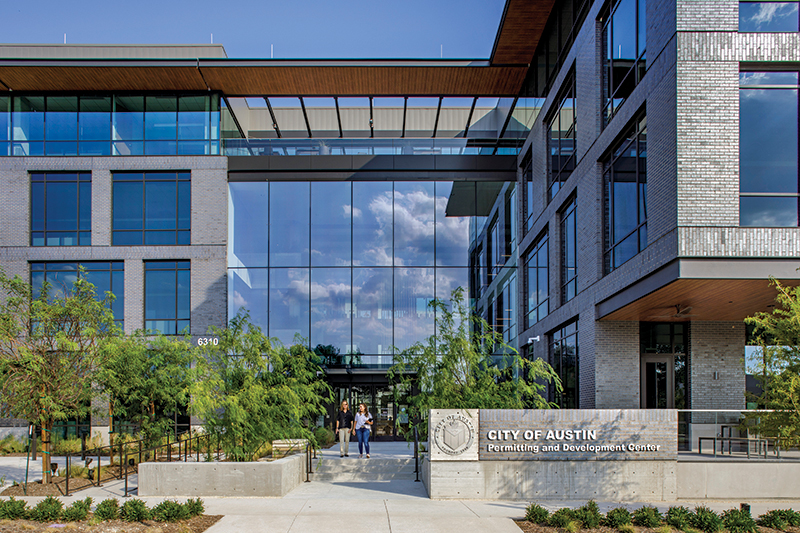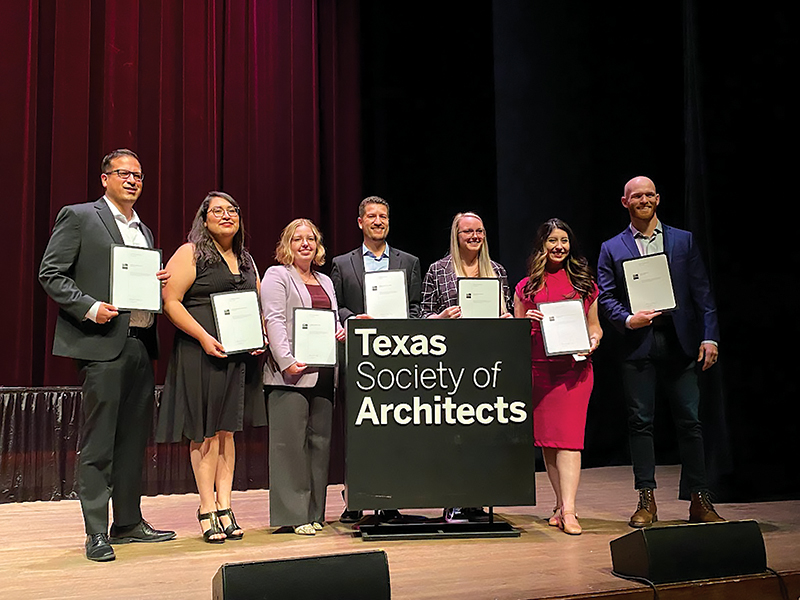

Architecture for All
“For all its enormous range of space, climate, and physical appearance, and for all the internal squabbles, contentions, and strivings, Texas has a tight cohesiveness perhaps stronger than any other section of America. Rich, poor, Panhandle, Gulf, city, country, Texas is the obsession, the proper study, and the passionate possession of all Texans.” — John Steinbeck
Discussions that led to the development of this issue of Texas Architect were broad, covering the private ownership of most of Texas’ land (95 percent, in fact) to the role of architects in shaping policy, to the unique challenges associated with public projects. To better understand some of these issues, I sought the counsel of Laura Foster, AIA, an El Paso-based architect who has worked both in private practice and for public agencies (she currently works for El Paso Water) — and who also serves on the TxA Publications Committee.
Foster shared with me her introduction into the world of public architecture, which was through a one-year contract position she held with a public agency in the 1990s. It was there that she recognized the incredible potential impact design professionals could make from inside a government institution; yet this path within the profession isn’t widely known nor commonly forged. So why is this?
Through the course of our conversation, Foster posited several reasons for this. For one, there is a lack of familiarity within many municipal and state governments about the value of design professionals — and what good design entails, for that matter. Currently, most architects who are embedded in a public agency have expertise on construction specifications and management rather than design. But as Foster explains, many processes within municipal governments would benefit from the expertise of a design-oriented architect. “You want an architect reviewing anything vertical and any public space,” she explains.
Architects have a role to play in reviewing applications in private development and building permitting departments, particularly in conservation districts or overlay districts. Historic preservation officers or city planners often fulfill this role, and while each of these groups brings expertise to these reviews, neither is typically educated on architectural design. Another challenge is that a role in a public agency may be less appealing to design-oriented professionals since their design skills are applied indirectly, and most individuals within this subset want to, well, design. In a public agency, design skills are instead used for scoping work, writing RFQs, selecting designers, and reviewing and editing the work of others.
So how can architects help to instill an ethos of good design into the public realm? To begin with, says Foster, architects must be able to educate the public, city officials, and engineers not only on what they do but its importance, and they must be able to communicate this through accessible, everyday language — not in the rarified lexicon, or “archispeak,” that industry professionals are prone to use. While this mode of communication serves a purpose within the profession, it is typically ineffective — and often very alienating — when trying to communicate and build rapport with those outside of the industry.
Secondly, establishing connections with engineers and engineering schools is critical since engineers are often the ones hiring architects for public projects. While they have a broad knowledge base (like architects), they often miss out on fundamentals of architectural design like sustainability strategies, proper building orientation, or how to read a set of architectural plans. Emphasizing the value of collaboration early on by becoming involved with engineering schools and project reviews is another important path for architects to forge.
And then finally, our discussion turned to how architects can become involved in public work. There is a commonly held perception within the profession that you must have experience in public work to win a public project — a chicken-and-egg situation, so to speak — resulting in a relatively small number of firms building for the public realm. Foster disagrees. “I really don’t believe it’s a chicken-and-egg situation, but I know how everyone feels that way,” she says. “But it’s not a productive framework. I would call it more of an incremental progress situation.”
While the path may be slow, Foster outlines several strategies for becoming involved in public work. For example, although an RFQ may make a steep request for, say, examples of five projects done for a government agency within the last five years (which can appear to be an insurmountable barrier to entry), these requirements are often malleable. Examples of analogous work that demonstrates the ability of the team to complete a process-oriented project are also acceptable. Another option is to become involved with a small project as a first step. Contact engineering consultants about joining their team since even infrastructure projects like a pump station have an above-ground component to it. And lastly, deliver a succinct and clear RFQ that is responsive to the needs of the client — a good practice to follow regardless of the project type and client. By bringing architects out of the cloisters and into the public realm, we can begin to nurture a more informed public and better public spaces for all.

Anastasia Calhoun, Assoc. AIA, NOMA, is the editor of Texas Architect.
Also from this issue

